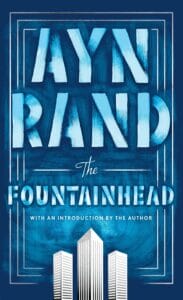
Book Summary
The Fountainhead is a very famous book written by Ayn Rand. It was published a long time ago in the year 1943. This book tells a story about a man named Howard Roark and his adventures in the world of architecture. It is a big book with lots of interesting ideas and characters.
The Fountainhead is a book that many people really like, but it is also a book that some people don’t like very much. Some people think it is a masterpiece and others think it is too long and boring. It is a book that makes you think and ask questions about life and what is important.
The main character in The Fountainhead is Howard Roark. He is an architect who wants to build buildings that are different and unique. But many people don’t like his ideas and they try to stop him. Howard is a very strong and determined person who never gives up. He fights for what he believes in and doesn’t care what other people think.
The book also talks about friendship and love. Howard has a friend named Peter Keating who is also an architect, but he is very different from Howard. Peter cares a lot about what other people think and he wants to be popular. He is not as brave as Howard and sometimes he does things that he doesn’t really want to do.
Ayn Rand, the author of The Fountainhead, was a very interesting person. She was born in Russia and later moved to the United States. She wrote many books and was known for her ideas about individualism and capitalism. Ayn Rand believed that people should be free to do what they want and that they should be rewarded for their hard work. She was a very influential writer and her books are still read and talked about today.
“The Fountainhead” is a novel written by Ayn Rand, first published in 1943. It is a story that explores the enduring conflict between individualism and collectivism, through the lives of its main characters. The novel is set in the United States and spans the years from the 1920s to the 1940s, a period of significant change and development in American society and architecture. The title, “The Fountainhead,” symbolizes the novel’s theme of individualism, suggesting the idea of an original source or a unique, self-sustaining creator.
“The Fountainhead” is a compelling narrative that revolves around the life of Howard Roark, an innovative architect who values his creative freedom above all else. Roark’s character is contrasted with that of Peter Keating, a conventional architect who seeks approval and success through conformity. The novel also introduces us to Ellsworth Toohey, a manipulative socialist, and Gail Wynand, a powerful newspaper tycoon, both of whom represent different aspects of collectivism.
The novel is a testament to Rand’s philosophy of Objectivism, which advocates for individual rights, rational self-interest, and laissez-faire capitalism. It is a thought-provoking read that challenges conventional wisdom and encourages readers to question societal norms and values. The characters are well-developed, and their interactions provide a deep insight into their contrasting ideologies.
However, “The Fountainhead” is not without its critics. Some readers find Rand’s philosophy too extreme and her characters too one-dimensional. The novel’s length and dense philosophical discussions can also be challenging for some readers. Despite these criticisms, “The Fountainhead” remains a classic work of literature that continues to inspire and provoke debate.
“The Fountainhead” is a novel of ideas, and its primary theme is the struggle between individualism and collectivism. Through the character of Howard Roark, Rand champions the cause of individualism. Roark is an uncompromising visionary who refuses to conform to societal expectations. He believes in the integrity of his work and is willing to endure hardship and rejection to maintain his creative freedom.
In contrast, Peter Keating represents the pitfalls of collectivism. Keating is a conformist who is more concerned with social approval than with the quality of his work. His success is dependent on the opinions of others, and he is willing to compromise his principles to achieve it.
Ellsworth Toohey and Gail Wynand represent different aspects of collectivism. Toohey is a manipulator who uses altruism as a tool to control others, while Wynand is a pragmatist who believes that power is the ultimate goal. Both characters serve as foils to Roark, highlighting his integrity and independence.
“The Fountainhead” is also a critique of modern society’s emphasis on conformity and mediocrity. Rand argues that true progress and innovation are the result of individual effort and creativity, not collective consensus. The novel challenges readers to question their values and to strive for personal excellence and integrity.
Ayn Rand was a Russian-American writer and philosopher, best known for her novels “The Fountainhead” and “Atlas Shrugged.” Born in St. Petersburg, Russia, in 1905, Rand witnessed the Bolshevik Revolution and the rise of communism, experiences that shaped her political and philosophical beliefs.
Rand moved to the United States in 1926 and began her writing career in Hollywood. She published her first novel, “We the Living,” in 1936, but it was “The Fountainhead,” published in 1943, that brought her fame and recognition. The novel’s success allowed Rand to devote herself to writing and to the development of her philosophy, which she called Objectivism.
Rand’s philosophy advocates for individual rights, rational self-interest, and laissez-faire capitalism. Her works have been influential in various fields, including politics, business, and academia. Despite her controversial views, Rand remains a significant figure in American literature and philosophy.
Don Quixote by Miguel de Cervantes
Miguel de Cervantes
Read Now →